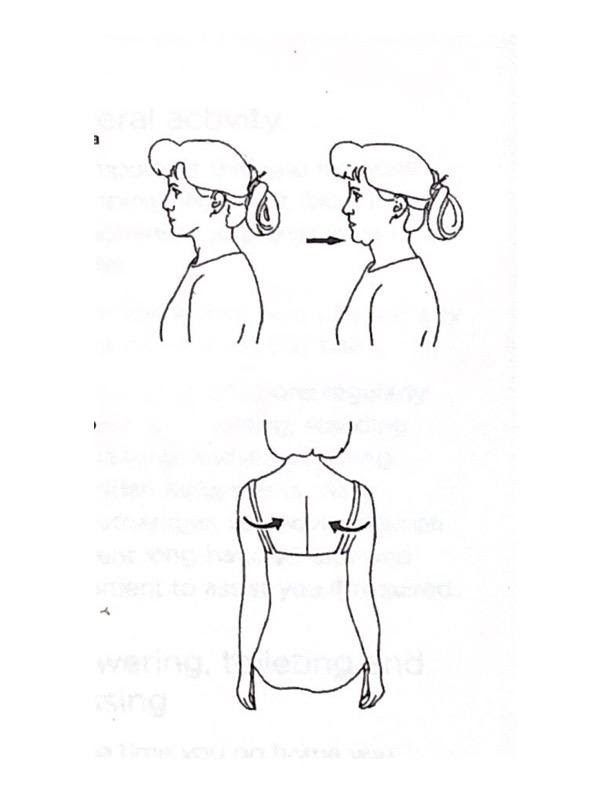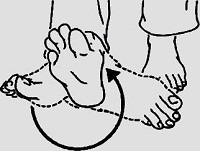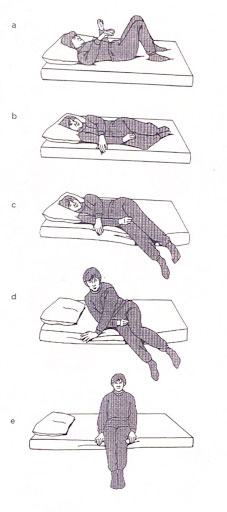The main role of the physiotherapist is to instruct you in an exercise program and to assist you in regaining independent mobility.
Pre-operatively
The physiotherapist will visit to discuss your general health and activity levels as well as answer any questions regarding your physiotherapy treatment. They will teach you the correct method of getting in and out of bed and explain precautions that will be relevant following your surgery.
Day of surgery
You need to commence your deep breathing exercises and foot and ankle exercises as soon as you are fully awake and your physiotherapist will see you the next day.
Day 1- Post surgery
The physiotherapist will assist you out of bed and mobilise as tolerated and assess your ability to mobilise independently. They will review your bed exercises and teach you further exercises to optimise your recovery. From this point onwards, the physiotherapist will assist you to progress your mobility, in preparation from the patients discharge home.
Before going home
- You should be walking independently.
- You will be assessed walking up a flight of stairs as appropriate.
- You will be well informed of how to look after your neck, and how to progress your mobility.
Walking and muscle activity help to prevent many postoperative complications. Once able to do so safely, ensure you walk around your room and the ward throughout the day as directed by your physiotherapist. Do not attempt to walk on your own until you are assessed as safe to do so.
Posture
Good posture maintains the spine in its optimal position for function and allows it to heal as fully as possible and put the least amount of strain on the intervertebral discs.
Avoid sustained positions – for example while watching TV, reading a book or working on a computer – take a break every 30 to 40 minutes
Try and change positions between lying, sitting, standing and walking.
Lying
Best Position for rest is lying on your back or lying on your side.
- Avoid elevating the head of the bed greater than 30 degrees
- Water beds or soft beds are not advisable. A firm, comfortable mattress is preferable.

Sitting
- When you sit in a chair, choose a high chair, preferably with arms
- You may find that you are more comfortable with a small pillow to support your lower back.
- Try to have your feet flat on the floor and keep your shoulders back and relaxed.

Standing

A good standing posture can be maintained by the following
- Keep chin tucked in
- Crown of head up
- Shoulders back and relaxed
- Keep shoulders over hips
- Breast bone up (try to lengthen the distance between it and your navel)
- Contract the lower abdomen and pelvic floor muscles gently
- Keep knees unlocked.
Exercises for posture
These exercises will help to maintain a good posture for your neck and shoulders
Do these exercises gently and do not push through pain
Do each exercise 5 times and hold each one for 10 secs
Do these twice a day
- While sitting, pull your head back as if you were making a double chin (don’t look down).
- In an upright position, sitting or standing, squeeze your shoulder blades down and back together (this is not shrugging your shoulder).

Exercises:
Deep breathing exercises
The aim of these exercises is to maintain lung expansion and prevent airway collapse, which can sometimes occur following surgery. It is best to do these in a comfortable upright position with shoulders relaxed. Breathe in deeply, feeling your lower ribs expanding outwards. Repeat 3-4 times. Perform these exercises hourly initially. As you become more active you will need to do the breathing and circulation exercises less often
Circulation exercises
The aim of these exercises is to decrease the risk of developing a Deep Vein Thrombosis (DVT) or Pulmonary Emboli (PE). DVT is most likely to occur when the muscles are inactive for long periods, for example, during prolonged bed rest. Contraction of the leg muscles, like when you walk around, has a pump-like action, allowing the blood to circulate.
You will need to do the following exercises hourly in hospital or follow the instructions of your physiotherapist:
-
Firmly move your feet up and down at the ankles in a pump like action.

- Roll your ankles in a circular movement, round and round. b) Squeeze your thigh muscles by pressing the back of your knee down into the bed. Hold for 3 seconds.

- Squeeze your buttock muscles together. Hold 3 seconds.

Flexibility exercises
The following exercises will help you regain gradual movement in your neck.
Please do them slowly and carefully so as to feel no more than a gentle stretch, and do not push through pain.
5 Repetitions of each exercise twice a day.
- Slowly tilt head forward and backward, then toward one shoulder and then the other.
- Turn head slowly to look over one shoulder, then the other
- Bring shoulders up and rotate around backward and then rotate forwards

Getting in and out of bed exercises:

The physiotherapist or nurse will assist you with your first walks, do not attempt to do this on your own.
It is essential that you 'log roll' when-ever you are going to get b out of bed, as this is the safest and most comfortable method.
Self help poles / monkey bars are not permitted.
- While lying on your back, end up your knees one at a time by sliding your feet towards you.
- Roll onto your side, keeping your hip and shoulder in line.
- Drop your feet over the edge of the bed.
- Come up into sitting by using your arms to push up on the bed.
- Perch / sit on the edge of the bed for a minute, as you may feel dizzy or lightheaded
Walking
Walking is the best exercise for your spine and for recovery. Regular walks improve the cardiovascular functions and increases your ability to perform physical activities.
- Try to walk 1 – 2 times a day initially, building up to 4 to 5 times per day.
- Try to walk as normally as possible
- Keep an upright posture, relaxed shoulders and swing your arms when you walk.
When you go home, gradually increase the amount of walking you do each day. Increase the distance or the amount of time you spend walking, as guided by your level of comfort.





